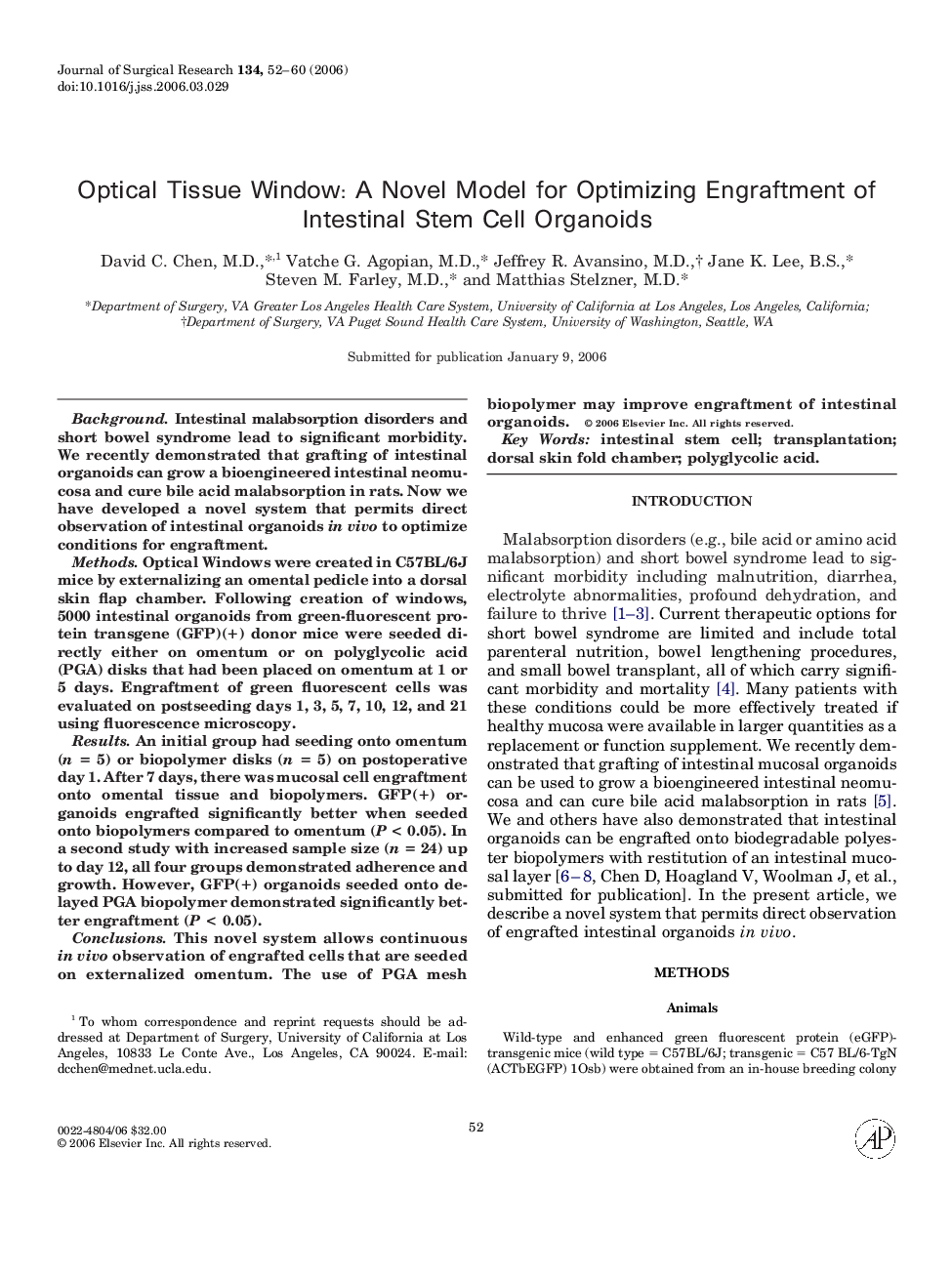| Article ID | Journal | Published Year | Pages | File Type |
|---|---|---|---|---|
| 4305409 | Journal of Surgical Research | 2006 | 9 Pages |
BackgroundIntestinal malabsorption disorders and short bowel syndrome lead to significant morbidity. We recently demonstrated that grafting of intestinal organoids can grow a bioengineered intestinal neomucosa and cure bile acid malabsorption in rats. Now we have developed a novel system that permits direct observation of intestinal organoids in vivo to optimize conditions for engraftment.MethodsOptical Windows were created in C57BL/6J mice by externalizing an omental pedicle into a dorsal skin flap chamber. Following creation of windows, 5000 intestinal organoids from green-fluorescent protein transgene (GFP)(+) donor mice were seeded directly either on omentum or on polyglycolic acid (PGA) disks that had been placed on omentum at 1 or 5 days. Engraftment of green fluorescent cells was evaluated on postseeding days 1, 3, 5, 7, 10, 12, and 21 using fluorescence microscopy.ResultsAn initial group had seeding onto omentum (n = 5) or biopolymer disks (n = 5) on postoperative day 1. After 7 days, there was mucosal cell engraftment onto omental tissue and biopolymers. GFP(+) organoids engrafted significantly better when seeded onto biopolymers compared to omentum (P < 0.05). In a second study with increased sample size (n = 24) up to day 12, all four groups demonstrated adherence and growth. However, GFP(+) organoids seeded onto delayed PGA biopolymer demonstrated significantly better engraftment (P < 0.05).ConclusionsThis novel system allows continuous in vivo observation of engrafted cells that are seeded on externalized omentum. The use of PGA mesh biopolymer may improve engraftment of intestinal organoids.
